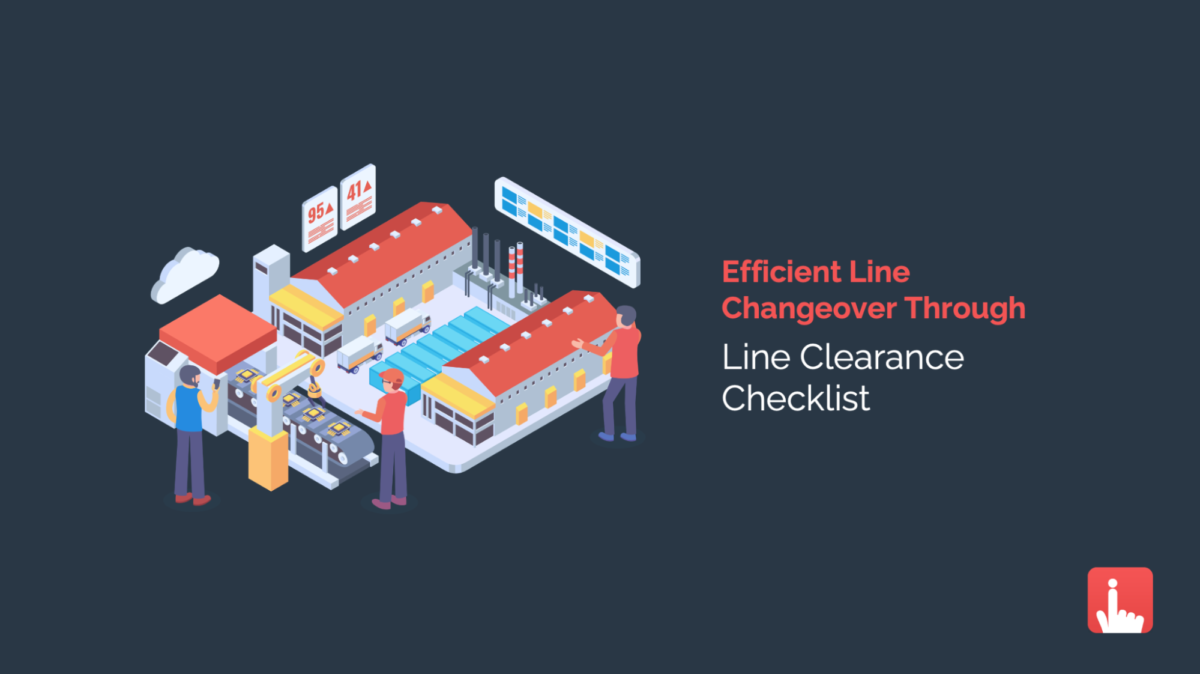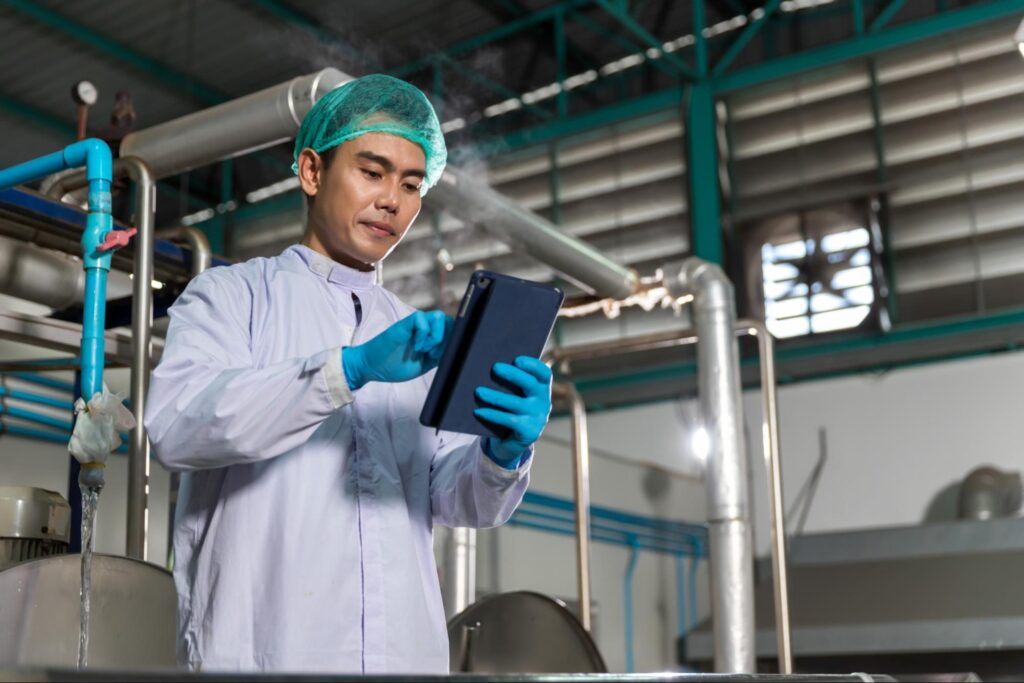Line clearance is a vital manufacturing procedure that allows operators to prepare for the following process and prevents them from accidentally mislabeling or mixing up completed products.
A line clearance checklist can help ensure that all areas are free of products, materials, and documents from a previous process.
Table of Contents:
1. Line Clearance and Its Importance in Manufacturing
2. Challenges in Using Traditional Paper-based Line Changeover Checklist
3. 3 Steps Involved During Line Clearance Procedures
4. Implementing Digital Line Clearance Checklist with FAT FINGER
Line Clearance and Its Importance in Manufacturing
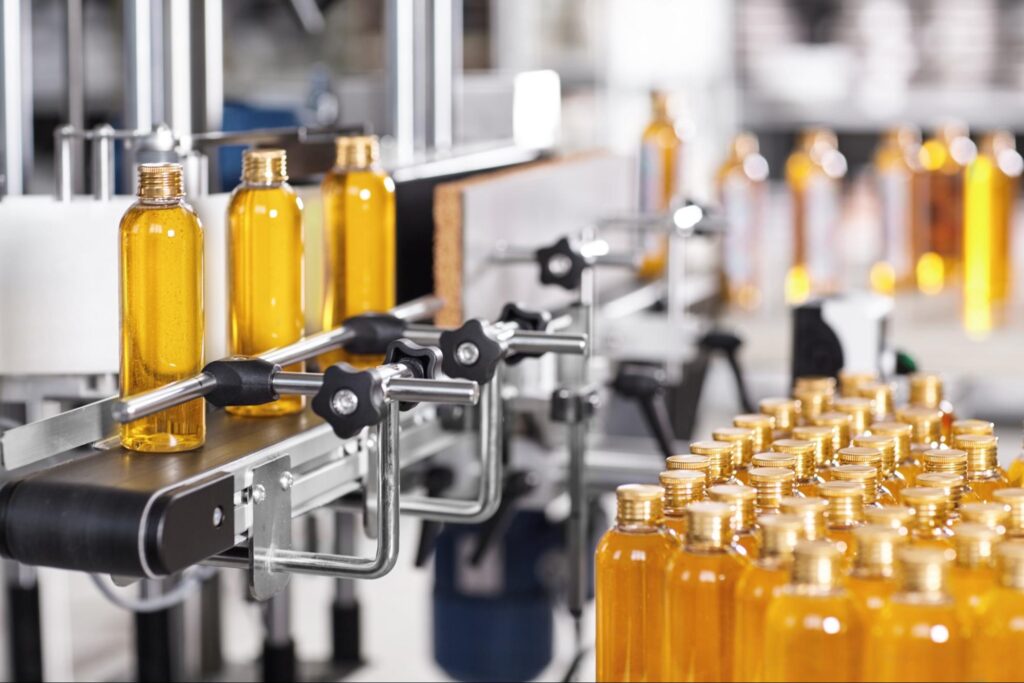
Line clearance is the process of verifying that all line changeover activities have been completed and that the line is ready to resume production. This is an integral part of manufacturing as it helps ensure that products are made to the correct specifications and that the line operates efficiently.
The benefits of line clearance include reduced downtime, improved line efficiency, and increased product quality.
Shop floors are constantly changing; manufacturers must introduce new products, discontinue old ones, adjust production schedules, and more. With so many moving parts, line changeovers must be managed carefully to avoid disruptions in production. That’s where line clearance comes in. By verifying that all necessary line changeover activities have been completed, line clearance helps to ensure a smooth, efficient manufacturing process. In addition to reducing downtime and improving line efficiency, line clearance helps maintain product quality by ensuring that products are made to the correct specifications.
For all these reasons, line clearance is an essential part of modern manufacturing.
Challenges in Using Traditional Paper-based Line Changeover Checklist
Any manufacturing line relies on line clearance – the process of making sure the line is clear of any materials, debris, or other obstructions before it is started up again. This is critical to ensuring the line runs smoothly and efficiently, and that there are no accidents or injuries. For many years, line clearance has been done using paper-based checklists. But there are some challenges with this approach.
1. It can be time-consuming to fill out the checklist manually, which can lead to lost productivity.
2.Paper checklists can easily get lost or misplaced, leading to missing critical line clearance items. This can lead to confusion and frustration among workers and increased safety risks.
3.Paper-based checklists are not very flexible. If a change is made to the line, it can be hard to ensure that all workers have the most up-to-date version of the checklist. This can lead to errors and potential accidents.

In today’s fast-paced manufacturing environment, traditional paper-based line clearance checklists simply don’t offer the speed and flexibility many companies need. As a result, many manufacturing companies are now moving to digital line clearance checklists.
3 Steps Involved During Line Clearance Procedures
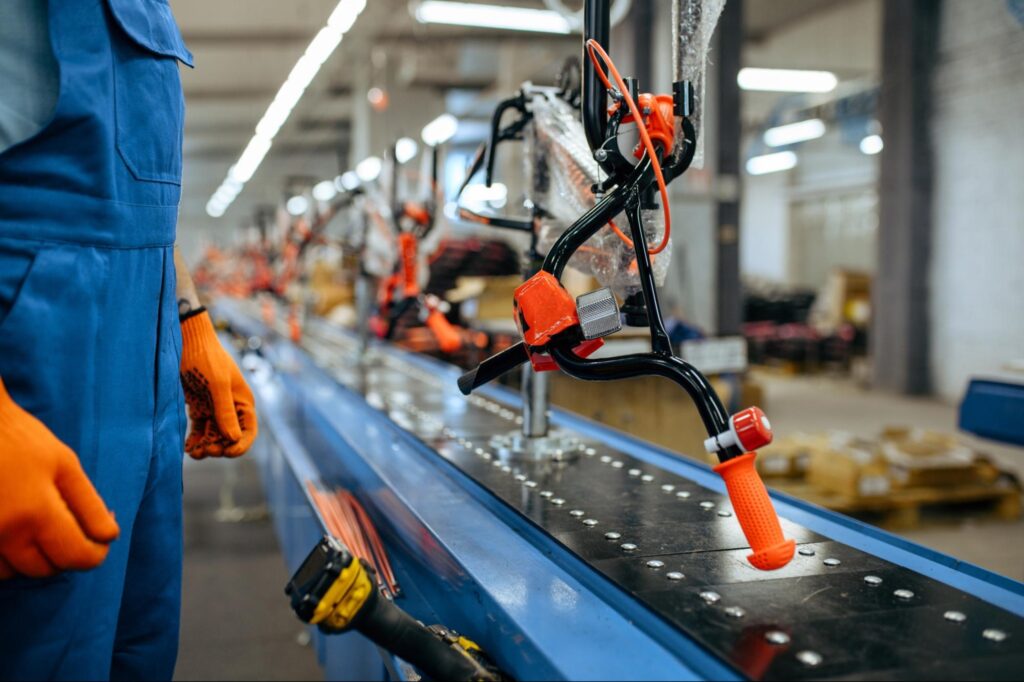
Line clearance has a set of procedures to be followed during the manufacturing process to ensure safety and compliance. There are three steps involved in line clearance procedures: 1) clearing the line, 2) cleaning the line, and 3) inspection
1. Clearing the line involves removing all products from the line and ensuring that no product remains in any of the line equipment. This step is essential to prevent cross-contamination of products. For example, if a line is used to produce both Dairy and Non-Dairy products, line clearance is necessary to avoid cross-contamination between the two products.
Line clearance is typically done at the end of a shift but can also be done during a changeover between production runs.
2.Cleaning the line involves sanitizing all surfaces that will come into contact with the product. This step is essential to prevent bacteria from contaminating products. It also involves removing all product build-up and debris from the line.
3.Inspection is conducted to ensure that the line is clear and clean and that all equipment is in good working order. All moving parts should be lubricated, and all electrical connections should be secure. The line should be checked for any potential hazards. Any areas that could pose a risk to employees or equipment should be identified and addressed.
After inspection, the line is restarted, and production can resume. Line clearance procedures are essential to ensure a safe and efficient manufacturing process. By following these steps, manufacturers can prevent contamination and ensure quality products.
Implementing Digital Line Clearance Checklist with FAT FINGER
In modern manufacturing, line clearance is an essential part of quality control. A line clearance checklist helps to ensure that all equipment is correctly set up and functioning before production begins. By using a digital line clearance checklist, manufacturers can streamline the process and reduce the chances of human error.
A CXV Global survey of 30 pharmaceutical professionals found that 100% of respondents had experienced a line clearance error in the past year, and 96% said their current line clearance process takes more than 60 minutes.
Do you spend way too much time double and triple-checking that you didn’t leave anything important off your checklist when clearing a production line?
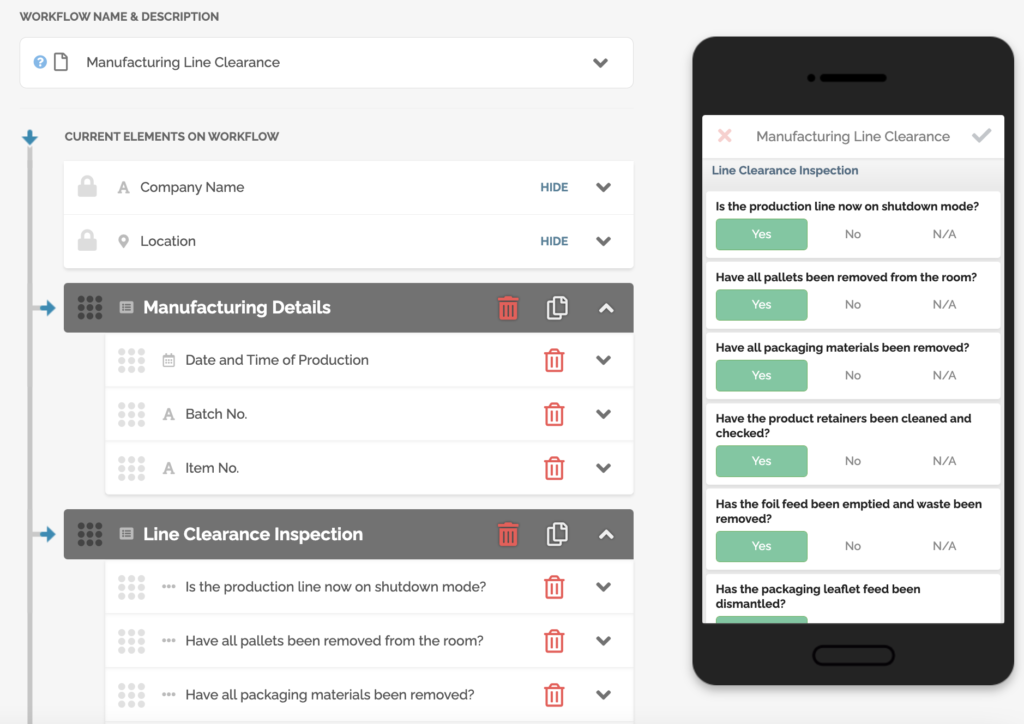
With FAT FINGER, all the necessary information is stored in one place, and anyone on the production line can quickly access it. Moreover,
-A digital line clearance checklist can be easily updated as changes are made to the production line.
-Remarks, corrective actions, and photos collected during line clearance can be added to the workflow.
-Generate reports on-site and send them to relevant stakeholders via email, PDF, or web link. This way, everyone can stay up-to-date on the latest information.
-Assign tasks and schedule your clearance line inspection directly from the app. This ensures everyone is on the same page and no one misses a beat.
As a result, using FAT FINGER digital line clearance checklist can help to improve the efficiency and accuracy of line clearance in manufacturing.
Imagine if you could clear your production line with confidence, knowing that you had everything you needed right at your fingertips. With FAT FINGER, that’s now a reality. So why wait? Get started today!
About FAT FINGER:
Ensure front-line teams do their work correctly every time. Drag & drop digital procedures that unlock operational excellence.In seconds anyone can build and deploy enterprise-grade mobile applications using an easy drag-and-drop no-code builder.
FAT FINGER uses machine learning to coach app users in real-time to make safer and improved decisions. Try building your digital procedure on FAT FINGER for free @www.fatfinger.io
Line clearance reporting made easy for everyone
We empower EVERYONE to initiate and create positive change to improve the company’s quality records. The only way to keep up with the speed at which the world moves today is to empower everyone from the front-line worker to the executive.
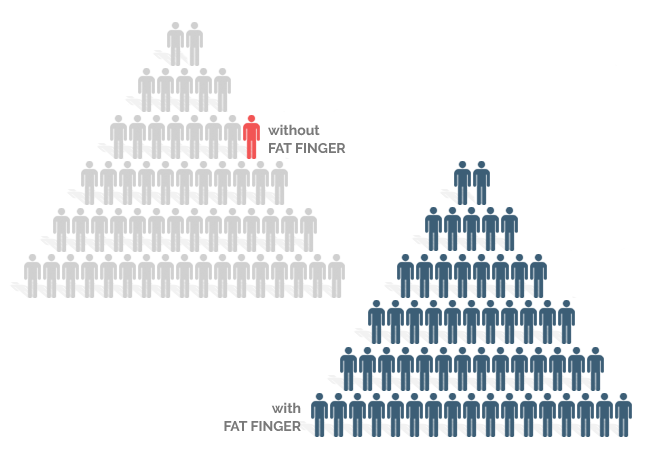
Build and customize your line clearance procedures in seconds
Every site has its own potential hazards. In FAT FINGER you will be able to import different line clearance processes and make them your own, or simply create one from scratch. And once you are done, you will be able to export your safety workflow to all of your different sites.
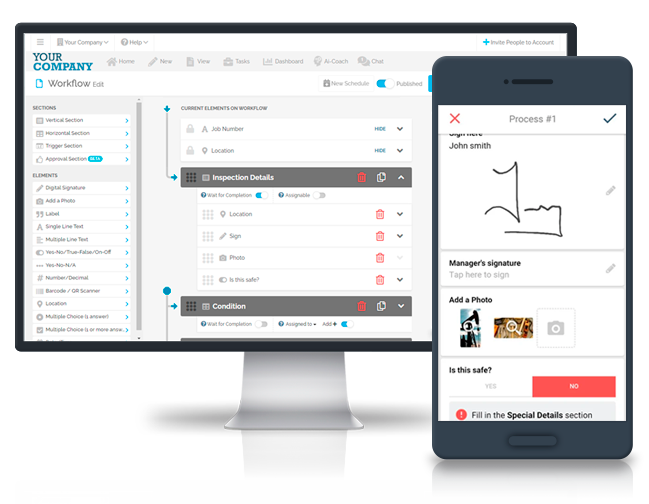
FAT FINGER is a key quality tool
FAT FINGER is the right place where to do all your quality checklists before performing risky tasks out in the field. And also allows any employee to share information in real-time with the entire team, such as photos of a potential defects.



